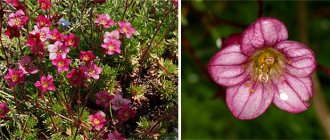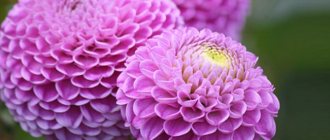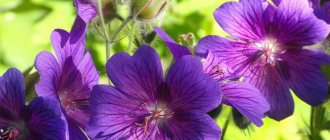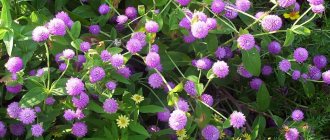A beautiful subshrub with the unusual name camellia, brought to Russia from Japan and the tropical Philippines, looks elegant at any time of the year. The bushes that bloom all season long do not shed their leaves even in winter, they look a little like roses, and vaguely resemble peonies. Regal camellia garden, planting and caring for which in open ground requires special attention, is considered a capricious plant among gardeners. But if certain growing rules are observed, it pleases the owners with lush flowering, delicate aroma and decorative appearance.
Description of the plant
Garden camellia (cameo) is an evergreen flowering subshrub that came to Europe from Japan, China and Korea, where it grows right on the edges of rivers and forests. It gained popularity among landscape designers due to its glossy dark green leaves with pointed ends and large flowers of soft pink, white and purple color. Under natural conditions, bush camellia blooms in winter, when temperatures reach 12°C. Moreover, the buds cover the branches for 2-3 months, sometimes longer.
With proper care, a shrub or tree grows up to 3-10 m, producing flowers with a diameter of 5-13 cm. Each opened bud has 5 petals and many stamens, and does not fall from the branch for a month.
On a note. Camellia is usually grown in the garden only by residents of warm regions, since the tree is quite heat-loving, even hybrid frost-resistant varieties cannot withstand frosts below 20°C. However, if you wish, you can bring the bushes planted in tubs or flowerpots into greenhouses and sheds in the fall and carefully cover them for the winter.
In landscape design, evergreen bushes are used for landscaping and creating unusual garden or park compositions. They are planted both individually and in groups. The garden Japanese camellia, which grows up to 10 m and produces single buds on the tops and axils of the branches, is especially valued by designers. The flowering of this interesting variety is shown in the photo below.
Application in landscape design
Camellia is a very ornamental plant that looks great as a backdrop for lawns and as a hedge element, although its sensitivity to winter conditions must be taken into account.
The plant is difficult to grow, however, knowing its characteristics and providing appropriate care for the camellia, we will provide a beautiful decoration for the garden or balcony.
An interesting idea is a combination of multi-colored camellia bushes in one flowerbed; such a composition will enliven even the most boring concrete terrace.
This is interesting! Camellia japonica is used in the dental industry to produce preparations that fight bacteria in the mouth. In herbal medicine, the disinfectant function of camellia extract is used in the care of wounds and various types of inflammation.
Types, varieties
Amateur gardeners and breeders have developed many varieties of garden camellia, numbering about 1000 varieties in the form of subshrubs, bushes, trees of different sizes with simple, semi-double and double flowers of different diameters. However, only 3 types are considered the main ones.
- Mountain (Miyagi). It is a shrub up to 3 m high with dark green ovoid leaves, glossy on the outside, with pubescence at the bottom. The leaves have grooves along the edges and reach a length of 3-5 cm. Flowers with a diameter of about 7 cm are distinguished by their delicate color, tinged with pink, white or reddish. They can be collected in 2-3 buds or bloom singly. Camellia Miyagi blooms from November to January-February.
- Japanese. It often grows as a shrub, but it can also be tree-like, reaching a height of 11-13 m. It has ovoid glossy leaves, sometimes taking the shape of an ellipse, pointed at the edges. Small or large flowers with a diameter of 4 to 12 cm can be collected in groups of 3-4 or bloom singly, delighting the owner with their appearance from December to March.
- Chinese (tea bush). It is an evergreen shrub with erect branches. The leaves of the tea bush are oval-elongated, alternate, dark green, 6-7 cm long. Below they are lighter in color. The fragrant flowers are solitary, appear in August, do not fall until late autumn, and are located in the axils of the leaves. The fruits are woody capsules.
Thanks to the development of frost-resistant, winter-hardy varieties of Japanese camellia, the crop can be grown as a perennial plant in open ground. The most popular hybrids that bloom in spring are the following:
- “Hagoromo” is a shrub with a dense crown and elongated branches, all spring covered with chameleon flowers that change shade from pearl pink to white;
- “Freedom Bell” is an upright tree with dense branches, having red flowers with a delicate coral tint, which tolerates pruning well;
- "Donation" is a slow-growing ornamental shrub with purple-pink flowers with a diameter of 10 cm;
- "Debbie" is a fast-growing species with small semi-double buds of pink-purple color;
- “General Colletti” is a hybrid with variegated flowers of a bright red hue, with white and scarlet streaks on the petals.
In the photo below you can see how different varieties of camellia bloom.
Camellia japonica
Adolphe Audusson
Giardino Schmitz
Origin and appearance of the plant
This aristocratic flower came to Russia from Japan and China. In these countries, camellia is used not only to decorate plots of land. The petals of its flowers, added to tea, give it an exquisite aroma and taste.
Camellia japonica flowers
Camellia is a perennial shrub or tree that belongs to the ornamental evergreens. It belongs to the Tea family. There are more than 200 varieties of this shrub in the world.
The 3 main varieties that are grown in central and northern Russia include:
- Oilseed;
- Mountain;
- Japanese.
Camellia oleifera reaches a height of 10 m. Basically, this species is not common in Russia. More often it can be found in forests located near water bodies.
Mountain camellia grows no more than 5 m in height. Most often it is a bush growing on mountain plateaus. It is distinguished by flowers of simple shape.
Camellia oleifera
The Japanese camellia bush reaches a height of about 2 m. It is from this species that many hybrids have been bred. One of the popular hybrids is Camellia Williams. It is adapted to low air temperatures. Its distinctive feature is the dropping of withered buds from the branches. No other varieties shed color on their own.
Description of the flower of the plant
Flowers of different varieties have different diameters. You can grow a camellia with flowers whose diameter is 1 cm, or a camellia whose flower diameter can reach 12 cm. In most cases, the size of the flower depends on the variety.
Even when purchasing seedlings of varieties distinguished by large flowers, you may not see them on the branches of the plant. This can be caused by improper care of the plant, as well as an inappropriate planting location.
Interesting! Camellia shrub is distinguished by a variety of colors. In nature you can find white camellia, red, pink, orange, variegated, etc.
The flowers are located singly on the branches of the plant. There is no aroma. The petals are dense, with oval edges, double, semi-double and single.
Selection of location and conditions of detention
Planting camellias and caring for them in the garden may seem quite difficult to some, because the perennial flower requires proper wintering and does not tolerate severe frosts or close proximity to groundwater. In what conditions should the beautiful cameo be grown?
- Lighting and location. The plant loves diffused sunlight, but the bright rays of the sun are unpleasant for it and can cause burns to leaves and buds. The best option for planting is the western or eastern part of the garden, where there is no wind and strong shade. It is better to plant seedlings on a hill, along fences or walls of a house.
- Temperature. Modern frost-resistant varieties can withstand frosts of 15-20°C in winter. However, in central Russia, bushes require shelter with non-woven material and spruce branches, otherwise the branches with roots will die during prolonged cold weather. In pots, plants can overwinter at temperatures of minus 10-15°C.
- Air and humidity. The bushes do not tolerate strong gusts of wind and drafts, so it is worth providing protection from them throughout the year. In spring and summer it is also necessary to protect crops from drought and overwatering.
- Priming. Cameo prefers to grow in acidic soil. If you use a purchased soil mixture for growing in a tub, the composition for rhododendrons or azaleas is suitable. If the soil is prepared independently, peat, sand, pine litter, humus and perlite are mixed in equal parts. Be sure to add a drainage layer of expanded clay, fine gravel or pebbles to the bottom of the planting hole.
Growing correctly - 5 secrets of success
Bush Camellia is a long-day plant. This means that the development of buds (future flowers) will be ensured with more than 13 hours of daylight. They do not nest in the shade.
Japanese pink blooms profusely if a good planting site is chosen.
Planting and transplanting
Garden camellia is a plant with fragile, sensitive roots . Therefore, it is rarely transplanted. Also, the roots should never freeze, otherwise the death of the plant is guaranteed.
Beginning gardeners make another mistake - they place the point of growth too deep.
The neck of the plant, located between the roots and the trunk, is never covered with soil - even a few centimeters here can be fatal. Proper planting of garden Camellia means optimally selected soil plus good drainage.
The plant generously thanks for light and air with abundant flowering.
Transplantation is carried out at the beginning of winter , when the plant is resting. Active periods of growth 2:
- early April, lasting about 3 weeks;
- from early July until autumn.
It is not worth replanting a shrub in the growth phase - at best, it will stop growing, and at worst, it will die.
Caring for a young plant involves replanting annually, and camellias that bloom annually need to be planted in a new place every 2 years.
Tree varieties will become a real decoration of your garden.
In order for the plant to branch , shoots are pinched when transplanting. You can also prune in mid-autumn - this stimulates the growth of buds in the sinuses.
Vigorous hybrid Debbie.
Selecting the right soil mixture
The main secret to success when growing bush Camellia is the correctly selected soil composition . During plant growth, the soil mixture should be well moistened, but also provide good drainage. To do this, add a large amount of organic fertilizers to the soil, as well as gravel or sand.
Delicate petals seem to be sculpted from wax.
You will have to “improve” the garden plot or plant the camellia in a container, since it prefers acidic soilconsisting of:
- sand or crushed bark;
- vermiculite, perlite;
- peat
Semi-double variety Margaret Hertrich.
It is this composition of the mixture that will allow the roots to receive uniform moisture, and the moisture will not stagnate and the soil will be permeable to air.
Chinese camellia can be used to brew aromatic tea.
The need for fertilizers
It is not enough to plant Camellia correctly - it is also important to provide it with suitable conditions in the future. It requires fertilizers just like plants that love acidic soil .
Camelia Reticulata is already fading and covering the ground with a pink carpet.
You can also use a complex composition: sulfur + potassium + phosphorus and nitrogen components in combination with microelements (boron and molybdenum, manganese, copper and zinc, iron).
The only exceptions are calcium and magnesium - they are found in tap water, and their excess increases the pH of the soil.
Climatic conditions
Caring for garden Camellia means ensuring the right climatic conditions. There are 4 main requirements:
- The plant prefers diffused but bright light . It is advisable to place it on the western or eastern side. In the south, the flower will need shading, and in the north there will not be enough light.
- In the warm season, our pet prefers a temperature of about 23ºC . For flower buds to form, a temperature of 18-20ºC is needed, and in winter, during the flowering period, 8-10ºC.
- It is important that fresh air .
- The flower prefers a high level of humidity and suffers from excessive dryness. It benefits from spraying with soft water or placing the tub on a damp tray, and during flowering it is sprayed carefully so that water does not get on the flowers.
The standard of grace and good taste.
Watering rules
Tree-like Camellia is watered abundantly and evenly in summer . To avoid overwatering, moisten the soil when the soil above dries out.
Japanese camellias come in a wide variety of varieties.
Careful watering is needed - because in cool conditions the soil can easily turn sour. If you forget about timely watering, the flower will dry out and shed its leaves.
An increase in the level of calcium in water is poorly tolerated by the plant - to avoid growth problems, use soft water (for example, settled water).
When to plant
Camellia seedlings are planted in open ground in April, around 15-20. Planting is completed on the tenth of June. They dig up a bed or flowerbed in advance, adding complex compounds in the form of granules. The process of planting from a container into street soil consists of several steps.
- Carefully remove the seedling from the pot, being careful not to damage the fragile roots.
- Place the cutting in the hole where the training material and a layer of nutrient soil have already been poured.
- Sprinkle the roots with soil without deepening the root collar.
- Compact the soil with your palms, water and mulch with sawdust and humus.
- The first week is shaded from direct sunlight, then watered regularly.
Features of seasonal care
Unlike other indoor crops, camellia blooms during the dormant period, in winter, and vegetative processes are activated in the spring. During this period, it is important to regularly water the plant and apply fertilizing on time. In winter, the flower is comfortable in cool conditions. If kept in a warm room, the buds may fall off and the camellia will not bloom. The light should be diffuse throughout the year. Daylight hours should last 10-12 hours. In winter there is not enough of it, so the plant is provided with additional lighting. Humidity should be high in any season.
Rules for caring for and growing in the garden
Caring for cameo in open ground when grown outdoors consists of regular watering, fertilizing, pruning and rejuvenating replanting as it grows.
- Watering. In the summer, the cameo is watered abundantly; in the heat, the leaves are additionally sprayed so that they do not dry out. In autumn, watering is reduced so that the roots do not get wet during the rainy season.
- Feeding. In spring and during the summer growth period, camellia is fed 2 times a month with mineral fertilizers or organic matter. The compositions are applied in liquid form immediately after watering. In autumn, fertilization is stopped.
- Loosening, mulching. They loosen the soil a couple of times during the summer, usually after watering. Mulch to protect against weeds and drying out of the soil with spruce litter, peat, dry leaves or sawdust.
- Trimming. Formative pruning of the bush is carried out in early spring in order to ultimately obtain a bush with an even and dense crown. Protective pruning is carried out in the fall; it helps protect the branches from freezing in the absence of snow or shelter.
- Transfer. Young plants are replanted annually, then, after flowering begins, once every 2 years. Transplantation is carried out during the rest period, from October to November.
Diseases and pests
Camellia, like all known garden plants, is susceptible to various kinds of diseases and pest attacks. Most diseases can be avoided and their occurrence can be prevented if camellias are provided with proper care in the open ground.
| Diseases and pests | Cause, symptoms and signs of the disease | Treatment and prevention |
| Flower rot | Brown spots on the petals that grow until they cover the entire bud. The affected parts of the plant feel slimy to the touch. Cause: fungus and secondary infection. | Damaged parts are removed and burned. The plant and soil are treated with preparations containing high copper content. |
| Fungal diseases of leaves | The leaves turn yellow, turn brown, wither and dry out. | All affected leaves and shoots are removed and burned. The plant is treated with fungicides such as Akarin or Fitoverm. |
| Gray mold | Brown spots appear on leaves, buds and young shoots, which crack after drying. Cause: fungus. | The affected parts are removed and treated with Fundazol. |
| Late blight root rot | Stopping growth and development. Wilting and falling leaves. Causes: fungus, water stagnation. | Irrigation adjustments. Treatment with Bordeaux mixture. |
| Root rot | At the first stages, wilting of the foliage is noticeable, but in later stages, leaves fall, rotting of the root collar and death of the plant. Reason: Excessive and prolonged wetting of the root system. | Watering is adjusted, the affected parts are removed, and the plant is replanted. |
| Violation of planting and care standards | Falling of buds and flowers. Reason: sudden frosts, poor-quality shelter, prolonged temperature rise, improper watering. | Adjustment of care and elimination of causes. Restoration of acid-base balance. |
| Pale yellow foliage. Cause: sunburn. | ||
| Fall of leaves. Reason: consequences of plant transplantation, or hypothermia. | ||
| Weevil | The adult weevil eats the leaves of the plant, and its larvae damage the roots. The plant withers and the leaves fall off. If the invasion is severe, the plant dies. | Treatment with Muhoed and Zolotaya Iskra preparations. |
| Spider mite | The leaves curl and dry out. The affected areas are covered with cobwebs. | The affected parts of the plant are removed and burned. The bush is treated with insecticides. |
| Tobacco thrips | Damaged leaves lose moisture, dry out and become stained. | The affected parts of the plant are cut off and burned. Treatment with Biotlin and Tsvetolux BAU. |
When a camellia is damaged by tobacco thrips, the soil around the trunk is treated for preventive purposes, since the insects overwinter in the top layer of soil.
Reproduction methods
Cameo can be propagated in two ways:
- seeds;
- cuttings.
The seed growing method is usually used by breeders, planting seeds in containers with nutrient soil, 5-7 pieces each, under film or glass. The process is quite lengthy and labor-intensive.
When propagating by cuttings, young green shoots are cut from the bush (only the tops are taken) and rooted in water or soil. When roots and new leaves appear, the cuttings are transplanted from cups into spacious containers and grown in them for 2-3 years. It’s even easier to buy ready-made seedlings at a garden center to immediately plant in a permanent place.
Madame Coco and camellias
The flower, combining tenderness and severity, has become a symbol of the Coco Chanel brand. This strong woman gave the camellia a symbolism of exquisite mystery. A simple flower, enchanting with its splendor, won Coco’s heart after reading Dumas’ novel. But there is another version of her special love for camellias.
Coco first received a flower as a gift from her lover, Arthur Capel. Subsequently, she constantly brought a bouquet of camellias to the place of his tragic death. For Madame Coco, this flower became the personification of her love. What made him especially attractive in her eyes was the absence of a smell that could overpower her favorite perfume.
Whatever the interpretation of the beautiful flower, it still leaves few people indifferent. The attractive appearance and colorful bright flowering overshadowed the main drawback - increased capriciousness when growing, making camellia a favorite of many gardeners. Since the time of Dumas, the “Japanese rose” has remained that mysterious and attractive flower in which everyone finds their own special meaning and symbolism.
Author of the article: skywriter13
What does a homemade camellia flower look like and how does it bloom?
The description of the delicate camellia flower is something that can prompt both an amateur gardener and an experienced craftsman to purchase it.
An evergreen shrub with graceful inflorescences of pink, red or white will add notes of oriental mystery, charm and unsurpassed beauty created by nature itself to the atmosphere. It is this combination of colors and shapes that attracts attention, fascinates and pleases the eye of any connoisseur of beauty.
Many people love the look of the beautiful camellia flower, but you should think seriously before getting one for yourself or giving it to others. It can bloom in a wide variety of colors and shades; differences can manifest themselves in whether its petals are monochromatic or with drops, stains of other tones.
The homemade camellia flower is presented in the photo, which fully reflects its tenderness and fragility:
Leaves: Elastic, dark green, smooth and strong, oval, with jagged edges and a sharp tip.
Flowers: petals with wavy edges, collected in one tier and radiating from a tube.
Inflorescences: do not have a pronounced odor.
Fruits: dry boxes with seeds.
See what a camellia flower looks like in the photo, which will more clearly demonstrate the elegance and charm of the plant:
Young branches are initially covered with down, but as they grow they become smooth and woody. Camellia under favorable conditions can grow to the size of a tree, which depends on the type, variety and how proper care is taken.
It is worth familiarizing yourself with photos of different types of camellias in order to understand which one is suitable for a garden or apartment, to find out detailed information about the option that you will like best, because the well-being of the plant depends on the choice of the gardener. The flower looks harmonious in light pots, Chinese vases and wooden flowerpots.
Transfer
Camellias are replanted not in February-March, like other indoor flowers, but in late autumn or winter. She begins a period of rest, coinciding with flowering. Therefore, you can replant a flowering plant, being careful. Young plants need to be replanted every year. Large bushes can be replanted by transshipment once every two to three years, when the roots fill the entire volume of the pot.
In preparation for transplanting (planting), it is necessary to prepare a wide pot, at the bottom of which a layer of drainage is poured. You can buy land ready for azaleas and camellias. Since different manufacturers allow deviations in the composition, when purchasing a ready-made earthen mixture, you should pay attention to the presence of the following components in the soil:
- peat;
- sand;
- leaf soil;
- vermiculite.
You can prepare the mixture yourself by mixing peat, sand, leaf and coniferous soil. All ingredients are taken in equal parts, and sand - half as much. The soil must be loose to prevent stagnation of water. Soil acidity should be between 4.0–5.5 units. To increase its permeability, it is recommended to add ground coniferous tree bark. Its pieces are usually sold for planting orchids.
This may be interesting: Methods of propagation of Streptocarpus
When replanting a flower, you should pay special attention to the root collar, which should not be covered with soil, but be at ground level. When transferring an adult plant to a larger pot, add fresh mixture. If it is necessary to increase the acidity of the soil, mulch it on top with sawdust or small pieces of bark.











